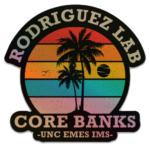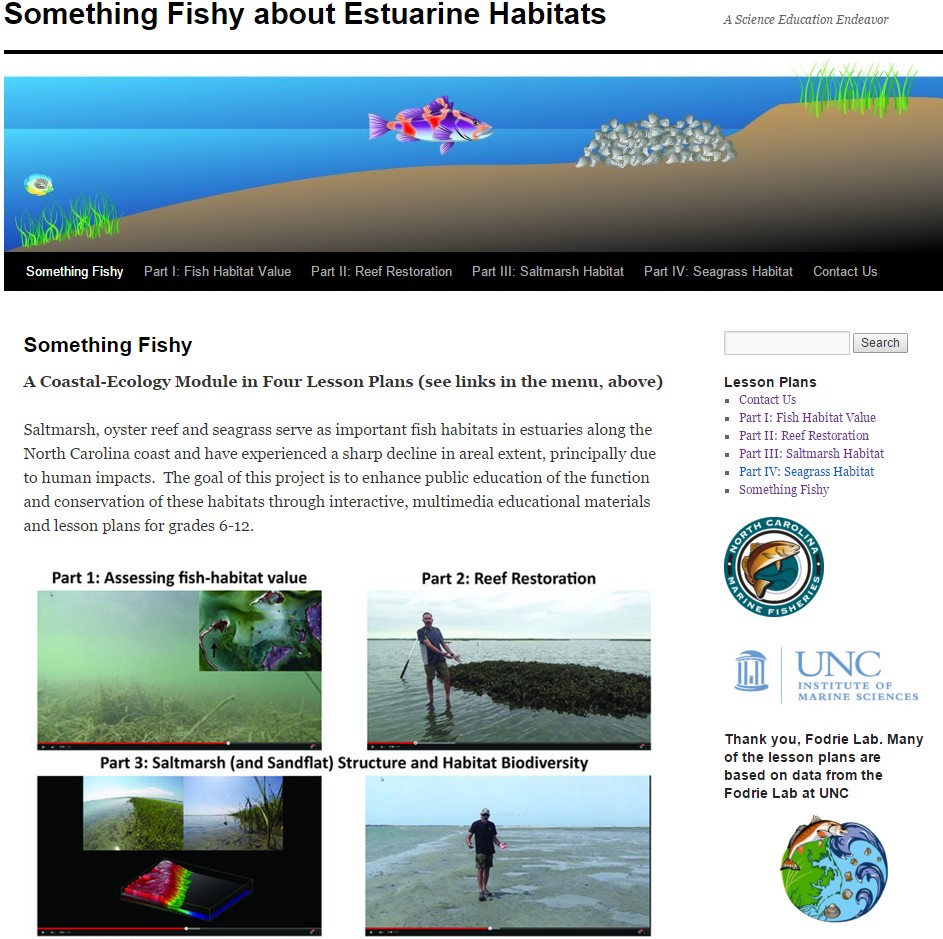Oyster reefs are often the only natural hard substrate in estuaries and are even labeled “oyster rock” on many old nautical charts. Oyster reefs have the potential to grow extremely rapidly (10 cm/year); in comparison, coral-reef growth, is measured in mm/year. Oyster reefs are not only composed of oyster shells, they have an abundance of mud and organic carbon filling pore spaces between shells. A core through an oyster reef samples compositional changes through time, but extracting that record is tedious. In this time-lapse video, Rachel Quindlen, Molly Bost, and Carson Miller are subsampling an oyster-reef core. The constituents of every 5-cm long subsample are separated using a sieve and later by combusting organic matter and measuring particle size with a laser. It’s time-consuming, but worth it.
Contact Information
Important:
Commitments to diversity and inclusivity are fundamental to the Rodriguez Lab and UNC-EMES’s mission.

Not really what Core Banks looks like, but a fun sticker.
Lab Musings (mostly)
- RT @annesmileyy: The 2022 @UNC_EMES grad student retreat was amazing! Loved spending time outdoors with fellow students and learning about… 08:27:27 PM October 12, 2022 from Twitter for iPhone ReplyRetweetFavorite
- RT @susanalesecohen: Have you met @ENEC_UNC graduate student @AndrewZachman? He studies the impact of forest stand structure and fire freq… 08:12:33 PM September 13, 2022 from Twitter for iPhone ReplyRetweetFavorite
- RT @UNCims: Did you catch the first field site blog post? Check it out! Stay tuned for a new post later this week. 06:00:09 PM September 11, 2022 from Twitter for iPhone ReplyRetweetFavorite
Lesson plans for middle- and high-school teachers that focus on estuarine fish habitats can be found here.
-
Recent Posts
- Explaining the wide range of salt marsh carbon accumulation rates August 12, 2022
- Working with John Anderson for 30 years June 18, 2022
- Elevations where oyster reefs grow best increase as they age June 3, 2021
Archives
Meta


